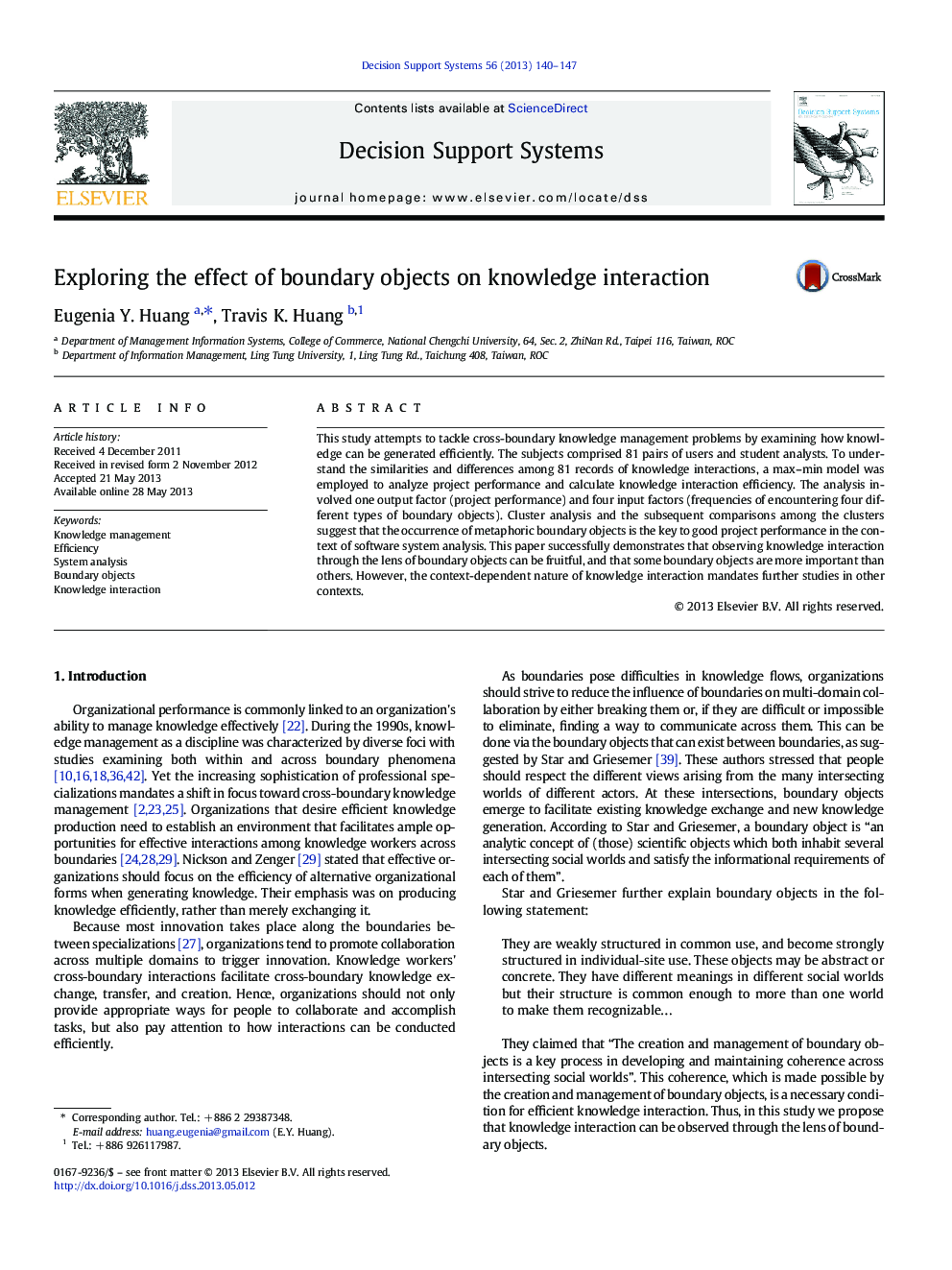| Article ID | Journal | Published Year | Pages | File Type |
|---|---|---|---|---|
| 6948591 | Decision Support Systems | 2013 | 8 Pages |
Abstract
This study attempts to tackle cross-boundary knowledge management problems by examining how knowledge can be generated efficiently. The subjects comprised 81 pairs of users and student analysts. To understand the similarities and differences among 81 records of knowledge interactions, a max-min model was employed to analyze project performance and calculate knowledge interaction efficiency. The analysis involved one output factor (project performance) and four input factors (frequencies of encountering four different types of boundary objects). Cluster analysis and the subsequent comparisons among the clusters suggest that the occurrence of metaphoric boundary objects is the key to good project performance in the context of software system analysis. This paper successfully demonstrates that observing knowledge interaction through the lens of boundary objects can be fruitful, and that some boundary objects are more important than others. However, the context-dependent nature of knowledge interaction mandates further studies in other contexts.
Related Topics
Physical Sciences and Engineering
Computer Science
Information Systems
Authors
Eugenia Y. Huang, Travis K. Huang,
